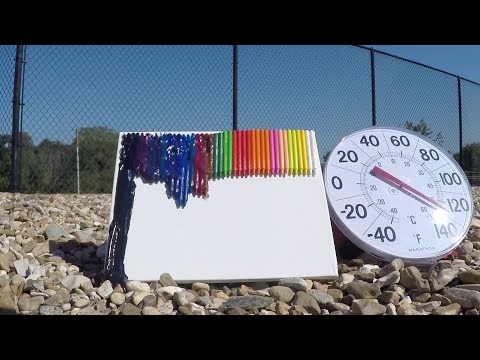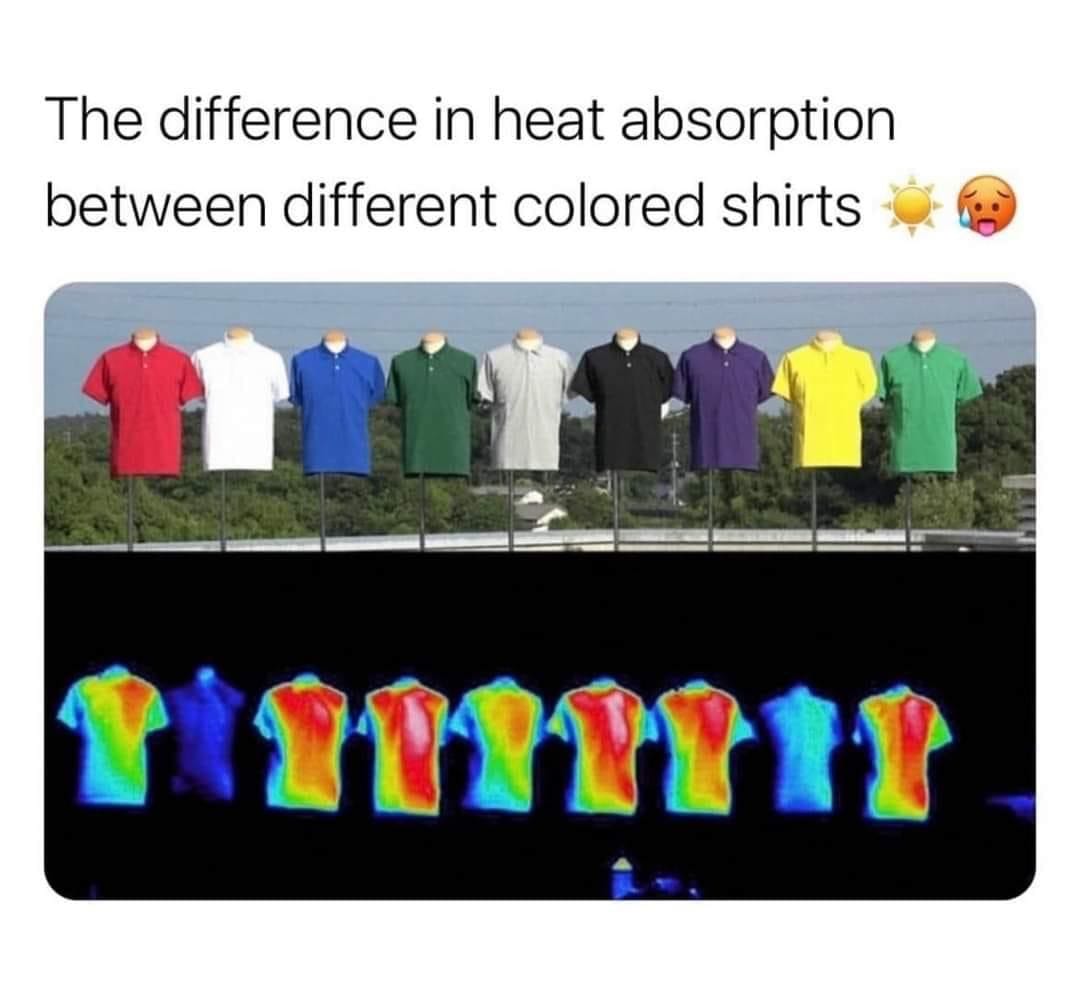The difference in heat absorption between different colored shirts refers to how various colors affect the amount of heat they absorb from sunlight. This principle is grounded in the science of light and thermodynamics.
How It Works
Color and Light Absorption:
- Light Absorption: Colors absorb and reflect light differently. Dark colors, such as black and navy, absorb more light and heat, while lighter colors, such as white and pastels, reflect more light and absorb less heat.
- Wavelengths of Light: Dark colors absorb a wider range of wavelengths of light, converting more of that energy into heat. In contrast, lighter colors reflect more light, which means they absorb less energy and, therefore, less heat.

Thermal Emission:
When light is absorbed by a shirt, it’s converted into heat. Dark-colored shirts will get hotter because they absorb more light and therefore more heat energy. Light-colored shirts will remain cooler because they reflect more light and absorb less energy.
Material and Weave:
The fabric material and weave can also affect heat absorption. For instance, tightly woven fabrics or synthetic materials may retain more heat compared to loosely woven or natural fabrics like cotton.
Benefits
Comfort in Hot Weather:
- Choosing Light Colors: Wearing lighter-colored shirts in hot weather can help keep you cooler. The reduced heat absorption means the shirt remains less warm, improving overall comfort.
- Breathable Fabrics: Opting for light colors in breathable fabrics further enhances comfort by allowing better air circulation and reducing heat retention.
Energy Efficiency:
Reducing Cooling Costs: In environments with high temperatures, wearing light-colored clothing can reduce body heat and help maintain a more comfortable temperature. This can potentially reduce the need for air conditioning, leading to energy savings.
Sun Protection:
UV Reflection: Lighter colors reflect more UV rays, which can provide better protection against harmful sun exposure compared to dark colors that absorb more UV rays.
Practical Tips

Dress Accordingly:
In hot climates or during summer, opt for light-colored shirts to stay cooler and more comfortable.
For winter or cooler weather, darker colors might be preferable as they can help retain body heat.
Fabric Matters:
Choose fabrics with good breathability and moisture-wicking properties to complement the color choice, enhancing comfort and temperature regulation.
Layering Strategy:
Consider layering with light-colored shirts and using dark-colored outerwear if you need to balance warmth with the benefits of heat reflection.
Mind the Material:
Be mindful of the material’s thermal properties. Cotton, linen, and other natural fabrics are generally better at regulating temperature compared to some synthetic fabrics.
By understanding how color affects heat absorption, you can make informed choices about your clothing to enhance comfort, manage energy use, and protect your health.

